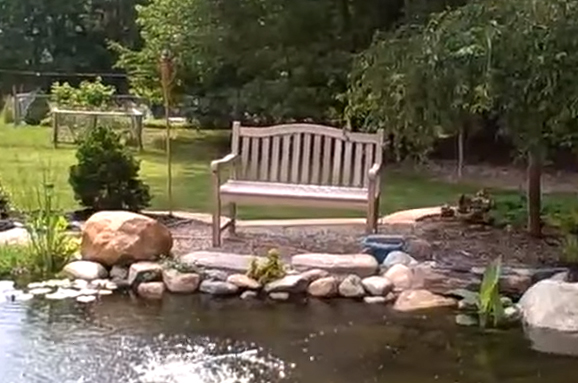ARTICLES
Advance Search
Aquatic Health
Aquatic Health, Fitness & Safety
Around the Internet
Aquatic Culture
Aquatic Technology
Artful Endeavors
Celebrity Corner
Life Aquatic
Must-See Watershapes
People with Cameras
Watershapes in the Headlines
Art/Architectural History
Book & Media Reviews
Commentaries, Interviews & Profiles
Concrete Science
Environment
Fountains
Geotechnical
Join the Dialogue
Landscape, Plants, Hardscape & Decks
Lighter Side
Ripples
Test Your Knowledge
The Aquatic Quiz
Other Waterfeatures (from birdbaths to lakes)
Outdoor Living, Fire Features, Amenities & Lighting
Plants
Ponds, Streams & Waterfalls
Pools & Spas
Professional Watershaping
Structures (Editor's Notes)
Travelogues & History
Water Chemistry
WaterShapes TV
WaterShapes World Blog
Web Links
Around the Internet
Aquatic Culture
Aquatic Technology
Artful Endeavors
Celebrity Corner
Life Aquatic
Must-See Watershapes
People with Cameras
Watershapes in the Headlines
In the last video I shared with you, I relayed information about upgrading a do-it-yourself pond into a watergarden that exemplifies the value of an informed, professional touch. This time, a pond we updated was large enough that I know it was installed by a professional - but one who at the time seems to have been a bit lacking in insight and imagination. There's only a brief glimpse of
The masters of 20th-century residential architecture have a profound influence on design to this day. From Charles and Henry Greene through to Frank Lloyd Wright and on to John Lautner and many others, these giants of design continue to push modern interpreters on to new levels of excellence in concept, form and execution. Among all of the spectacular houses these architects built, few speak to us with greater energy than Wright's Fallingwater, a spectacular home he designed in 1935 in Mill Run, Pa. Cantilevered over a stream flowing to a dramatic waterfall, the project has inspired envy among generations of architects and homeowners who'd love to capture even a portion of its special magic in another setting. This is a tale about one such attempt, a house built about 20 years ago with
As this newsletter appears, I'll be heading north to Paso Robles, Calif., to participate in the 20th Anniversary Celebration for Genesis - very much aware of the fact that it's a two-decade landmark for WaterShapes, too: We started pre-launch activities related to the magazine at about the same time the founders of Genesis began organizing their
Through the years, I've had the privilege of working on a number of historic swimming pools. From grand old plunges at Yosemite National Park to the small patio pool at the Virginia Robinson Gardens in Beverly Hills, Calif., I have often approached these treasured artifacts with two sets of eyes - first as an expert in forensics who figures out how the original design and construction came together, then as an engineer tasked with returning these precious vessels to good working order. Among all of the historic pools I've worked on, two of them fill me not only with pride, but also with the awesome sense that I'm collaborating with Julia Morgan, a woman for
‘Why is it that, on the pool/spa side of the watershaping business, it’s so difficult to find much by way of truly workable plans and specifications?’ That’s how Brian Van Bower started his Aqua Culture column in the April 2003 edition of WaterShapes before adding: ‘In residential work, of course, the tone is set by local building inspectors and plan checkers, whose needs seem to vary tremendously from place to place. But that’s no excuse for the fact that the plans used in a great many residential projects are grossly
Writing about droughts and water shortages in his March 2008 On the Level column, Bruce Zaretsky started by observing, ‘This turn of events has made me determined to design landscapes requiring as little water as possible – one consequence being that I now do all I can to avoid using large expanses of
The first time I visited my friends in Branson, Mo., it was a town in the midst of an identity crisis: It had built its brand as a place for mature folks to go hear popular music offered by performers cherished by their generation, from Andy Williams and Lawrence Welk to Roy Clark and Glen Campbell. The acts were still great, but they had largely become
Today's swimming pools, spas and waterfeatures have moved several steps beyond their traditional, classic forms in shape, complexity, visual interest and beauty - and so have the techniques and technologies involved in giving them a warm, inviting glow when evening comes. Happily, we're far past the bad old days when the common solution to most watershape lighting tasks was placement of a blinding, 500-watt incandescent bulb in a huge, visually intrusive niche: Through years of innovation, experimentation and refinement with light-emitting diodes (LEDs), lighting is now adding splendor and wonder to the pool/spa experience in compact, unobtrusive packages - a design asset that couldn't






















